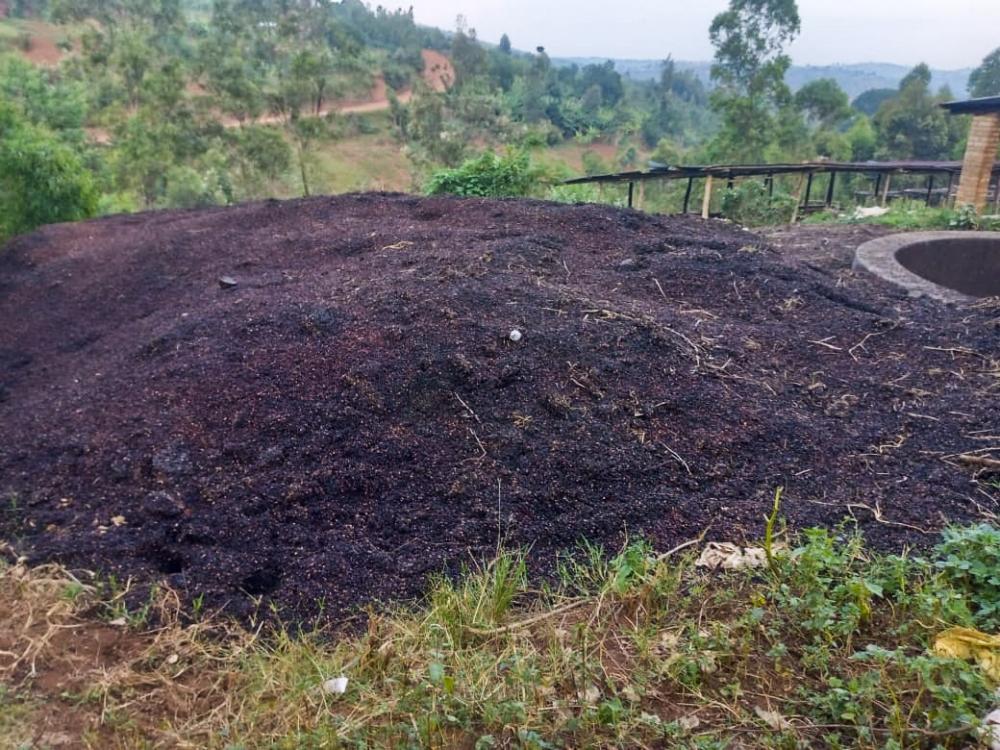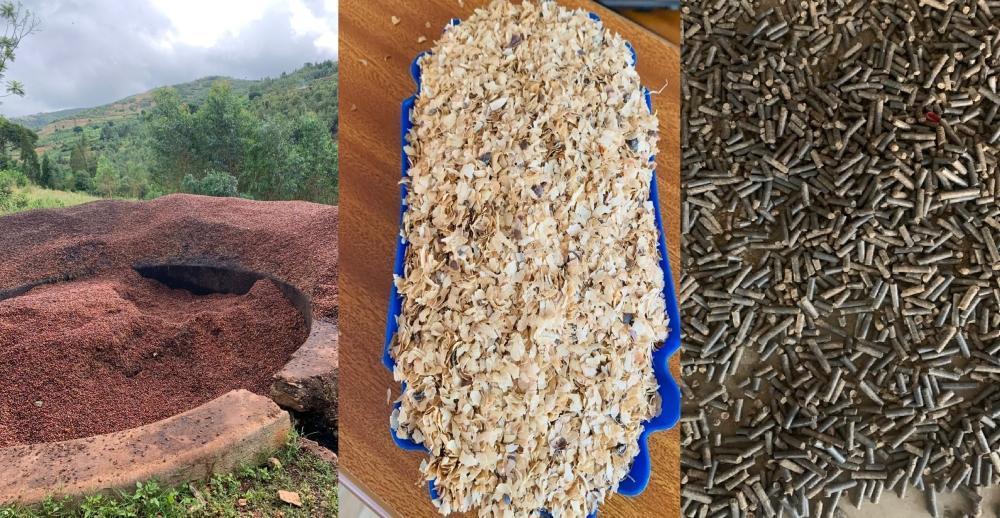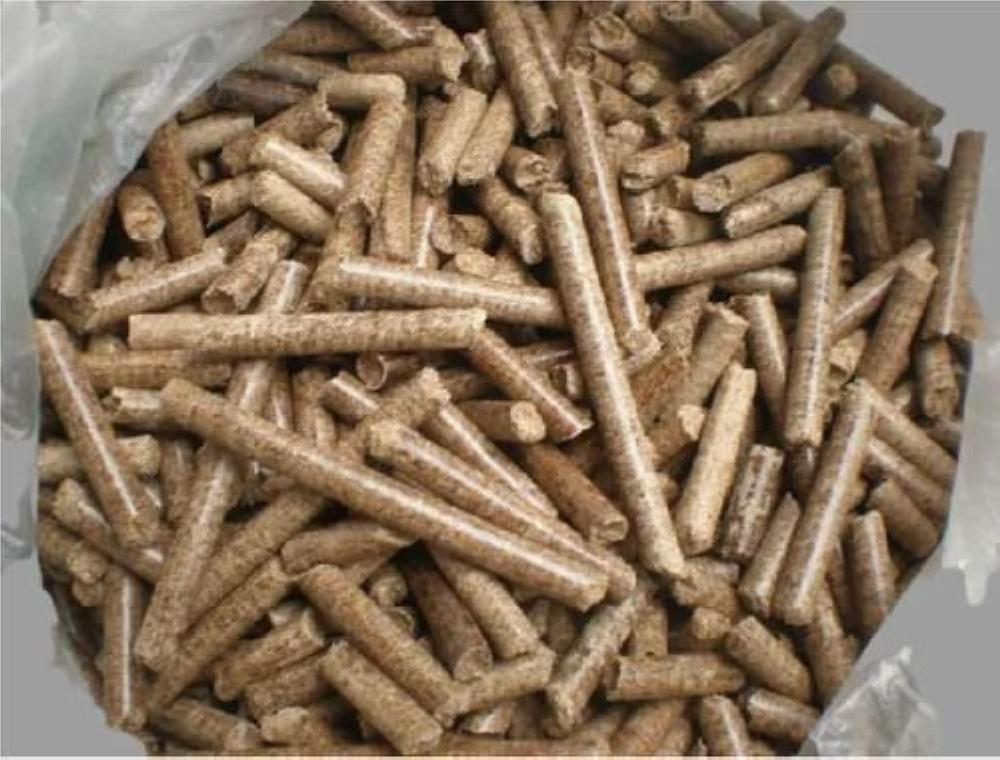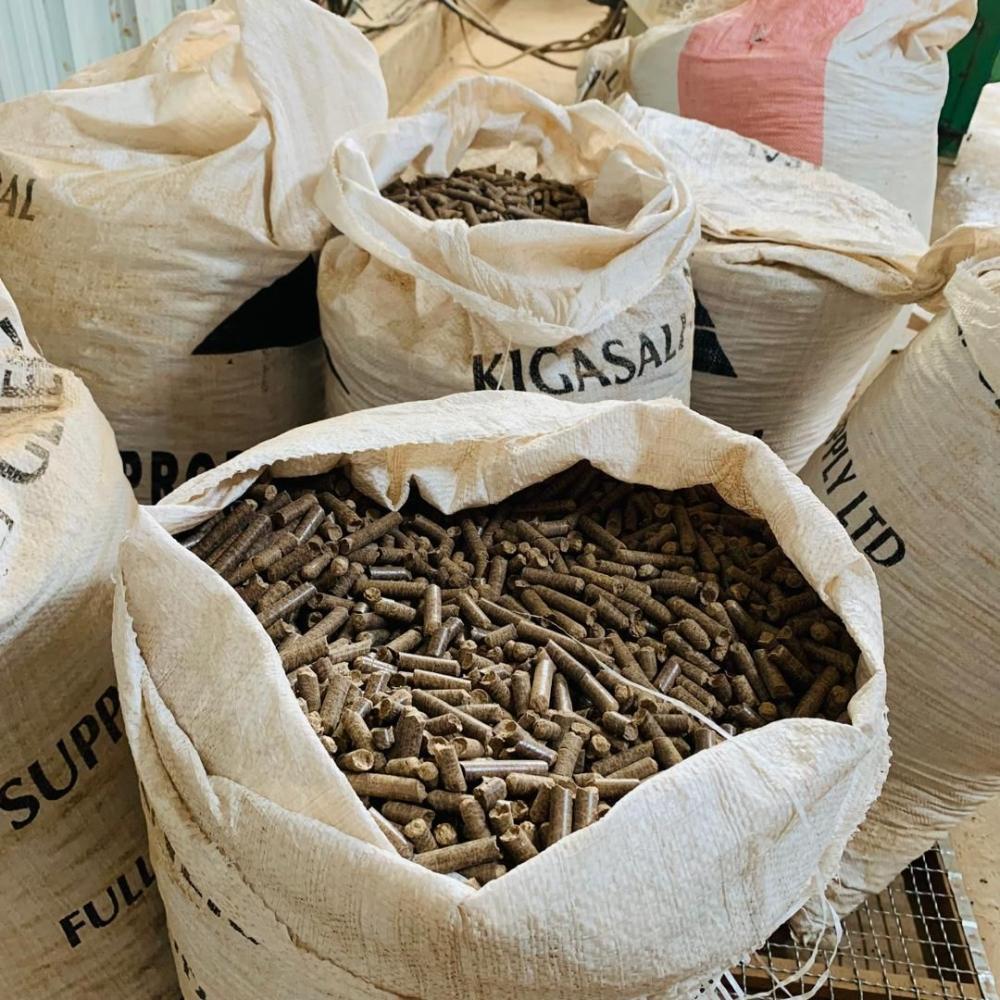Africa-Press – Rwanda. Coffee red pulps also known as coffee cherry husks, the fleshy outer parts of the coffee fruit removed during processing, are being turned into nutrient-rich organic manure and pellets that replace charcoal and firewood.
This improves soil health and reduces agricultural waste as part of circular food systems.
The innovation provides an environmentally friendly way to recycle coffee-processing by-products.
Circular food systems are food production and consumption models designed to minimise waste, maximise resource efficiency, and regenerate natural systems.
The circular food systems follow the principle of reduce, reuse, recycle and regenerate.
Coffee red pulp (also known as coffee cherry husk) – which makes up more than 45% of the coffee cherry – is usually considered waste.
The fleshy outer parts are being turned into nutrient-rich organic manure and pellets that replace charcoal and firewood.
Yet it is rich in organic matter, nitrogen, phosphorus, potassium, and other micronutrients.
“We have embarked on producing organic manure from coffee red pulps. Such waste would otherwise be burnt and pollute the environment. Organic manure from the pulps is used to fertilise coffee and maximise production instead of relying on chemical fertilisers. We produce 600 tonnes of organic manure per season,” said Consolee Niyigena, a project manager at Kigasali Coffee Company Ltd, a firm specialised in harvesting, processing and exporting green coffee beans.
Coffee farmers are using organic manure to meet some international market standards.
Diogene Kimenyi, a farmer and livestock keeper in Nyagatare District, said his company has a 10-hectare banana plantation intercropped with coffee, which they could not have easily fertilised before.
“Even when we did, we could only manage part of it due to limited means in affording chemical fertilisers. But once we realised that all the waste we generate can be turned into enough organic fertiliser, sufficient not only for our own use but also to sell on the market, we came to understand that what used to be called waste can actually bring in money,” he said.
He added that his company now has waste collection centres where different types of waste are gathered with the aim of turning them into resources.
“Within two months, Kimenyi and his colleagues can produce between 50 and 70 tonnes of organic manure, selling it at Rwf200 per kilogramme”
Pellets from coffee cherry husks for cooking energy
Pellets are small, compressed cylinders made from biomass waste such as coffee husks, sawdust, rice husks, maize cobs, or other agricultural residues.
Niyigena added that coffee cherry husks are also being turned into pellets to replace charcoal and reduce pressure on forests.
After the coffee beans are removed, the husks are collected and sun-dried or mechanically dried to reduce moisture.
The dried husks are then ground into fine, uniform particles for easy pelletising.
The hot pellets are cooled, hardened, and packaged for use.
Pellets can be used in stoves, boilers, or power plants as a renewable energy source.
“We have so far produced 600 tonnes of pellets from such coffee waste,” she said.
The companies producing organic manure and pellets from agricultural waste are among the SMEs supported under the Circular Food Systems for Rwanda project.
Certification of agricultural waste products
A recent policy analysis, particularly the Issue Paper on Circular Food Standards and Conformity Assessment (June 2024), identified key regulatory gaps and emerging reforms.
Notably, the overlapping and sometimes fragmented roles of the Rwanda Standards Board (RSB), the Rwanda Inspectorate and Competition Authority (RICA), and the Rwanda Food and Drugs Authority (FDA) have posed challenges for SMEs navigating certification, inspections, and product compliance in a transitioning circular economy.
These institutions have now initiated critical reforms in standardisation, inspection, and certification frameworks.
The reforms respond directly to the gaps and recommendations outlined in the Issue Paper, developed under the Circular Economy in Food Systems Multi-Stakeholder Platform (MSP).
The platform has updated SMEs on the recent regulatory reforms, presented progress on implementing the seven policy recommendations from the Issue Paper, and created a platform for open dialogue between SMEs and regulatory agencies.
Eric Ruzigamanzi, the Country Representative for the World Resources Institute (WRI) in Rwanda, which supports the Circular Food Systems for Rwanda project, said Rwanda still loses up to 40% of its agricultural produce stressing that both food waste and agricultural waste can be turned into valuable products.
“We see innovations turning food waste into resources. We need to continue working together with the Ministry of Agriculture to reduce these losses, and to ensure that whatever is lost can be turned into other products that benefit farmers and Rwandans in general.
These include animal feed, organic fertilisers, and briquettes to replace charcoal and firewood, among others. Some initiatives are even adding value to crops such as sweet potatoes, which are often wasted. That is why we carry out research—to find out what else can be recovered from waste and how it can be turned into income,” he explained.
SME development fund in circular food systems
He added that the project has been supporting over 20 small and medium-sized enterprises (SMEs) to adopt circular business models, while also working to create an enabling policy environment to catalyse system transformation.
The initiative has established an SME Development Fund that provides technical support to SMEs in Rwanda to strengthen their ability to adopt circular business models, reduce food losses, and recycle agricultural waste.
“We want to collaborate with many institutions to support more SMEs with innovations in circular food systems,” he noted.
With an estimated 1.3 billion tonnes of food lost or wasted globally each year, and approximately 800 million people lacking sufficient nutrition, there is an urgent call for structural transformation.
“Ten per cent of the population starves while 30% of food is wasted. Rwanda seeks to reduce post-harvest losses to 5%,” said Patrick Karangwa, Director General of Agriculture Modernisation at the Ministry of Agriculture and Animal Resources (MINAGRI).
For More News And Analysis About Rwanda Follow Africa-Press









